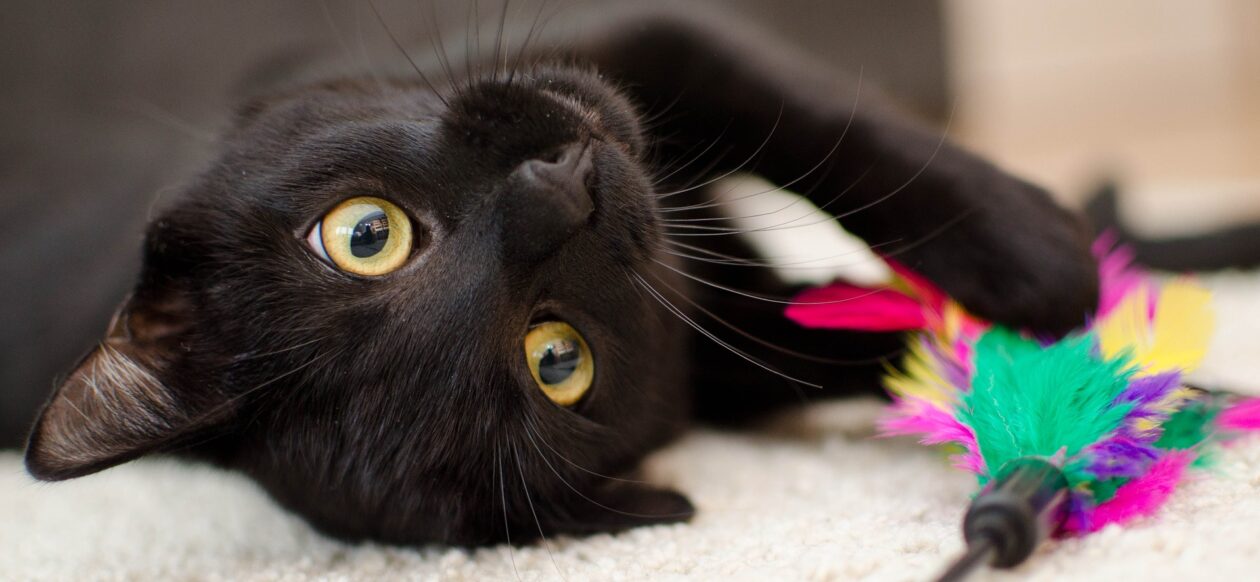Feline high blood pressure or hypertension can be a dangerous problem for your cat’s health. If left untreated it can affect your cat’s organs including their eyes, kidneys, heart and even brain. A simple blood pressure test can be done during your cat’s annual veterinary exam to quickly determine if your cat’s blood pressure is in the normal range. Detecting it early is the key to success and will minimize damage to vital organs.
Cats that are particularly vulnerable to developing hypertension are often older cats as well as cats that have been diagnosed with chronic kidney disease, diabetes, heart or hyperthyroid disease. If your cat has been diagnosed with any of these diseases, you want to watch carefully for the signs and symptoms of hypertension, and get annual or bi-annual veterinary exams to avoid the possible damage caused to organs by hypertension. Since it’s more common in older cats, you’ll want to include regular blood pressure checks in your annual exams starting with cats that are 8 years of age and older. For cats that are 14 years and older, include a blood pressure test in their bi-annual exam.
Symptoms and Problems Caused by Hypertension for Cats
If hypertension is left untreated it can cause blindness, heart abnormalities and disease, stroke, seizures, paralysis of the hind legs, and various neurological and nervous disorders. The most common complaints related to hypertension left untreated in cats is retinal detachment, retinal hemorrhage, and acute blindness. Some cats with hypertension will show signs of vomiting, abnormal vocalization, have tremors, frequent blinking, are depressed, lethargic, disoriented, and may show weakness on one side of the body. Some cats may have blood in their urine or bleed from their nose, in addition to other signs.
Checking your cat’s blood pressure to make sure it’s in the normal range can prevent not only these from happening, but can mean treatment before there is more damage. Fortunately, high blood pressure or hypertension is a highly treatable disease with medication and regular monitoring. Diagnosing the disease early can significantly minimize the damage and discomfort caused to your cat’s vital organs.
Measuring High Blood Pressure in Cats

Blood pressure testing is a fairly simple, inexpensive, non-invasive and pain-free procedure. Some cats when visiting the vet can experience increased anxiety and stress, which can elevate their blood pressure. To measure your cat’s blood pressure, your veterinarian will likely use a Doppler Flow Detection device, which is commonly used for cats and small animals. The simple procedure involves applying a surgical fluid for conductivity and cuffing your cat’s leg or tail. The cuff is inflated and then the pressure is slowly decreased and a reading is taken. This method measures systolic pressure only, which for cats is considered normal between 120-160 depending on how relaxed they are. Sometimes the measurement will need to be taken several times to make sure the reading is accurate, particularly if the cat is feeling anxious. In addition, a blood chemistry panel may be taken for a more complete, thorough analysis and accurate diagnosis. An eye exam may be beneficial as well since ocular disease is common in many hypertensive cats.
Treatment of High Blood Pressure in Cats
Management of hypertension will depend on if there are other secondary underlying causes linked to the disease like chronic renal disease and hyperthyroidism. Some 19-65% of chronic renal failure cats have hypertension1 and roughly 87 percent of cats with hyperthyroidism have mild high blood pressure2. Secondary hypertension accounts for approximately 80 percent of all hypertension cases. Cats with an underlying cause of hypertension will be treated first for that disease in addition to the hypertension. If your cat has been diagnosed with either chronic renal disease or hyperthyroidism, or both, be sure to have their blood pressure tested regularly.
The most common treatment used for hypertension is a beta blocker or calcium channel blocker therapy—a medication given in pill form daily. Cats that have repeated high systolic blood pressure readings over 160 mm will require regular monitoring of their blood pressure along with being given their medication. Cats with both kidney disease and high blood pressure should have plenty of access to fresh, clean water, since they can become dehydrated quickly. To provide enough water, add more water bowls in key locations of your home to give them more access to water. You can also add warm water to your cat’s canned food to increase their hydration level. Your vet may also recommend and prescribe a cat food that is lower in sodium.
Cats that have high blood pressure can live very normal, healthy, long lives with proper care and treatment, high blood pressure medication, and regular monitoring.
References
1 Syme, HM et al (2002) Prevalence of systolic hypertension in cats with chronic renal failure at initial evaluation. J Am Vet Med Association 220:1799
2 Petmd.com: High Blood Pressure in Cats


